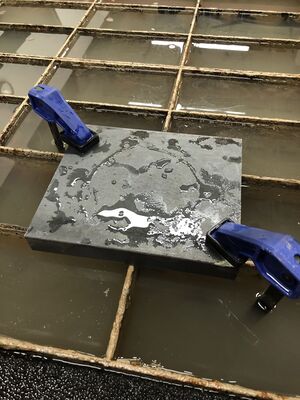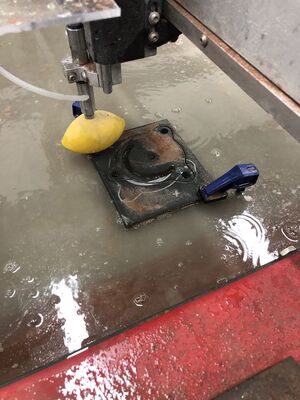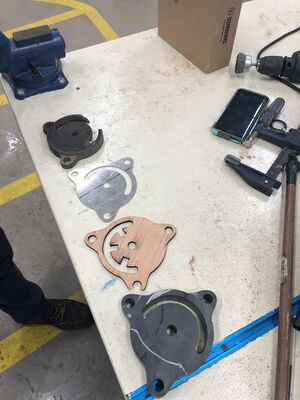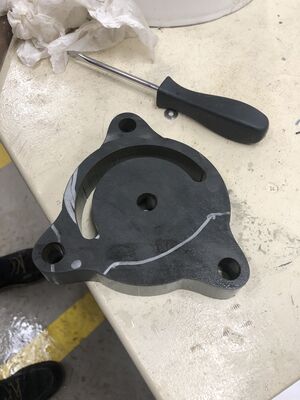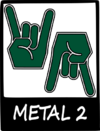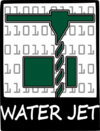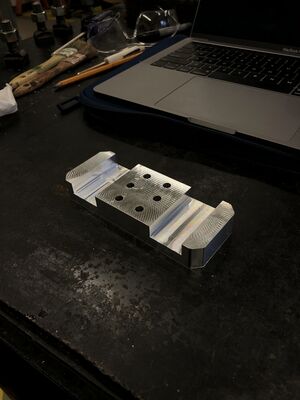Asher Burkin: Difference between revisions
No edit summary |
|||
| Line 52: | Line 52: | ||
===Water Jet=== | ===Water Jet=== | ||
I | I worked on a project to cut this 1 inch thick, cold rolled slab of steel, into a new base to hold a vice. The entire operation took around 45 minutes. The garnet container needed to be refilled over 10 times and I was constantly checking the orientation of the the water jet cutter. In setting up the program, I had to take into account the kerf of the water as the holes and size of the base needed to run true to the design. I ran a very slow cut for this operation to ensure the the deflection of the water, as it first goes through the steel, does not curve too much through the cut. | ||
[[File:Cold rolled steel.jpg|300px|Overall 1in thick cold rolled steel|left|]][[File:Water jet cut for steel vice.jpg|300px|Cutting in water jet|center|]] | [[File:Cold rolled steel.jpg|300px|Overall 1in thick cold rolled steel|left|]][[File:Water jet cut for steel vice.jpg|300px|Cutting in water jet|center|]] | ||
Revision as of 00:46, 24 November 2021
MakerSpace Fabrication Technician
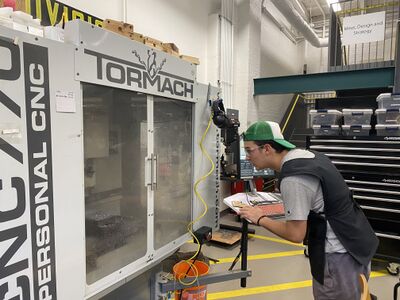
Email: aburkin@tulane.edu
Major: Engineering Physics
Certificate: Mechanical Engineering
LinkedIn: in/asherburkin
Profile
Maker Skills
- Machines - CNC Mill, CNC LatheOMAX Water Jet, 3D Printing (Extrusion/SLA), Laser Cutter (Vector/Raster)
- 3D Design - Solidworks, AutoDesk Fusion 360, AutoDesk MeshMixer
- Finite Element Analysis - AutoDesk Fusion 360
- Graphics - Inkscape
- Programming - Computer Aided Design (CAD), Computer Aided Manufacturing (CAM), MATLAB, Intelli-MAX LAYOUT, Intelli-MAX MAKE, Cura
Projects
CNC Mill
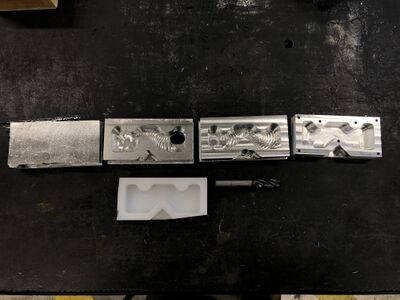
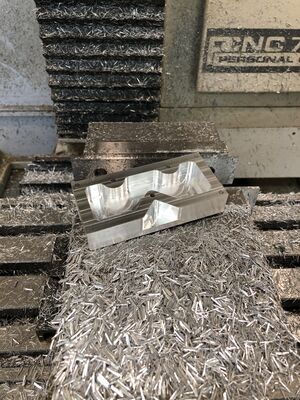
This is the second piece I milled from the Titans of CNC course.
Water Jet
I worked on a project to cut this 1 inch thick, cold rolled slab of steel, into a new base to hold a vice. The entire operation took around 45 minutes. The garnet container needed to be refilled over 10 times and I was constantly checking the orientation of the the water jet cutter. In setting up the program, I had to take into account the kerf of the water as the holes and size of the base needed to run true to the design. I ran a very slow cut for this operation to ensure the the deflection of the water, as it first goes through the steel, does not curve too much through the cut.
